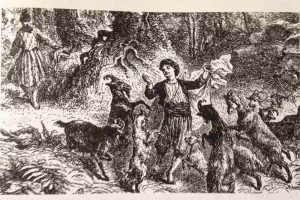
According to Ethiopian legend, a goatherder named Kaldi discovered coffee beans after noticing the effect it had on his goats. He shared his findings with local monks, who took note of the energizing effect. The knowledge quickly spread.
Wild coffee plants from Ethiopia were taken to Southern Arabia for cultivation, specifically in the Yemeni district.
Coffee had made it to Turkey, Persia, Egypt, and Syria. It became associated with social activities, like chatting, playing chess, and listening to music. Early coffee shops called qahveh khaneh appeared; these early coffee shops became centers for information and were referred to as “Schools of the Wise.” Women were typically not invited to these coffee shops.
Coffee has made its way to Europe. Local clergy of Venice condemned the beverage out of fear, but Pope Clement VIII gave it his approval after trying it himself and finding it specifically satisfying.
Coffee shops exploded across Europe and became a common breakfast beverage. Finally, the beverage makes its way to the colonies where it settles in early New York.
The Mayor of Amsterdam gifted King Louis XIV of France a coffee plant, who proceeded to plant it in the Royal Botanical Garden in Paris.
Gabriel de Clieu, a naval officer, obtained a seed from the Royal Botanical Garden in Paris and delivered it to Martinique, where it thrived and is credited with the spread of over 18 million coffee plants.
Francisco de Mello Palheta brings coffee seeds to Brazil. Though the French were not willing to share, the French Governor’s wife was entranced by his good looks and secretly gifted him seedlings.
The Boston Tea party increased the American proclivity towards coffee. Up until then, tea had been the primary morning beverage
Coffee cultivation begins in the Hawaiian islands.
Coffee farms begin using industrial roasting and grinding machines. Vacuum-sealed containers were invented for ground roasts, and decaffeination techniques were developed.
Instant Coffee is perfected.
The top coffee-producing countries are Brazil, Columbia, Indonesia, and Ethiopia, with a growing effort to focus on sustainability.
Coffee continues to be one of the highest demand goods in the world, next to oil.

Leave a Reply